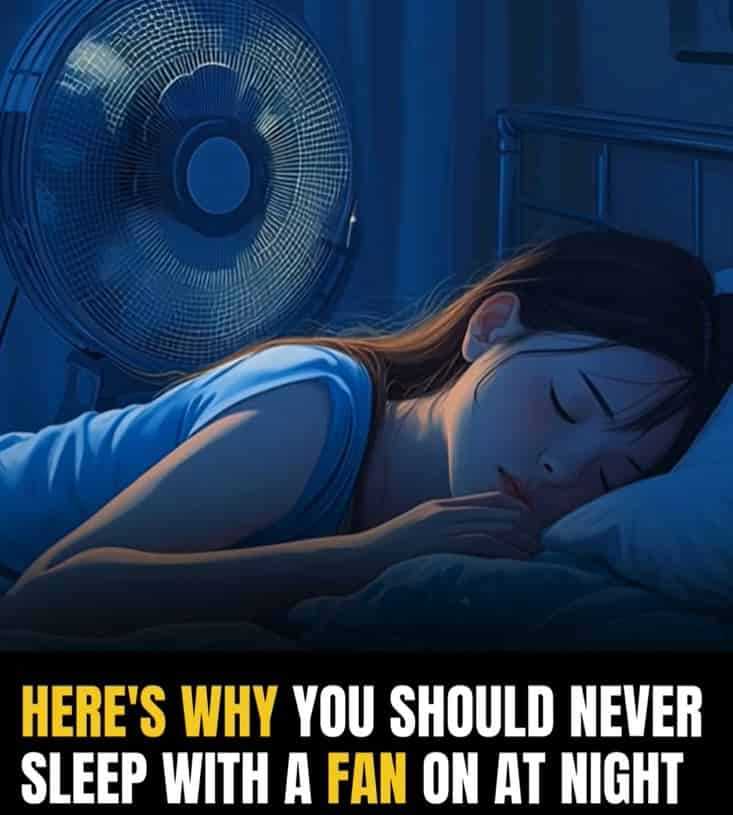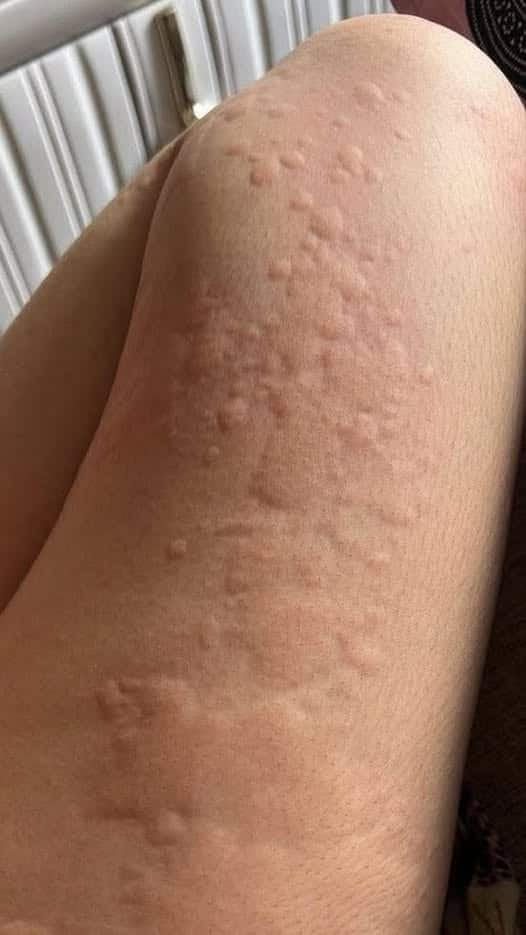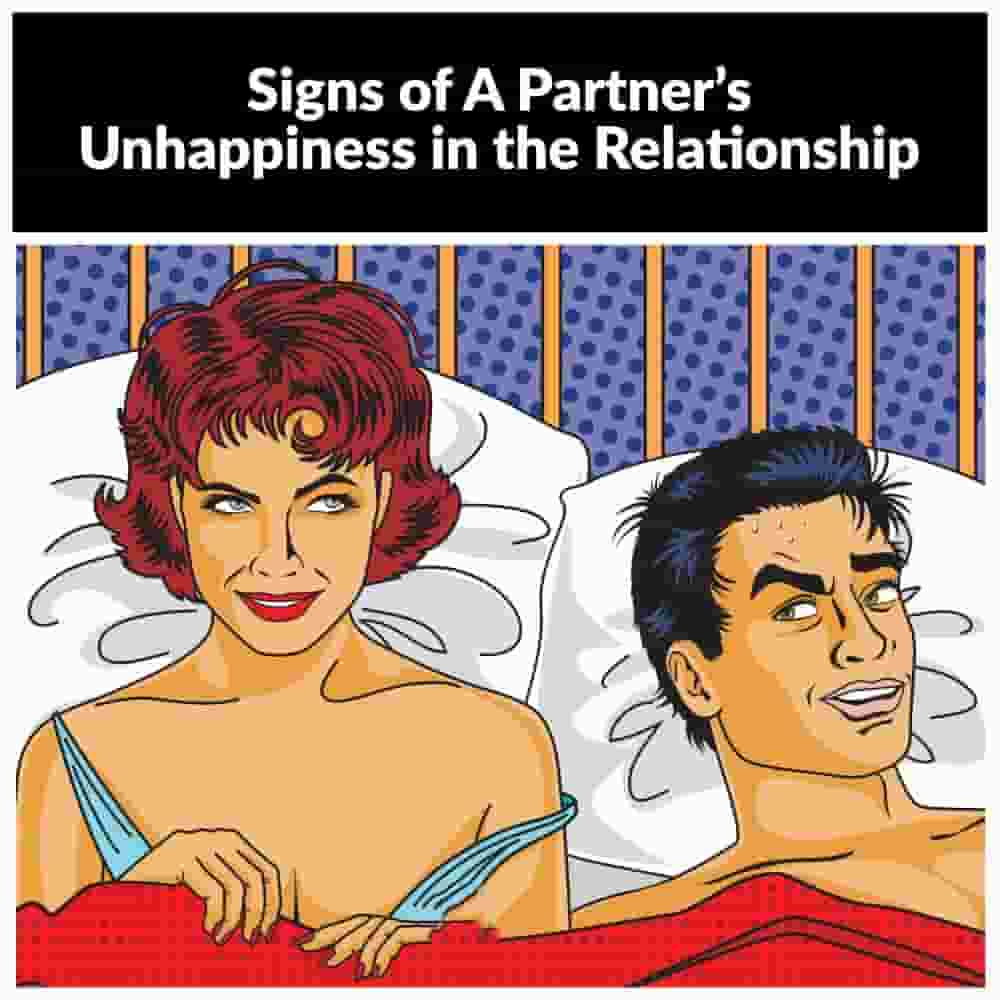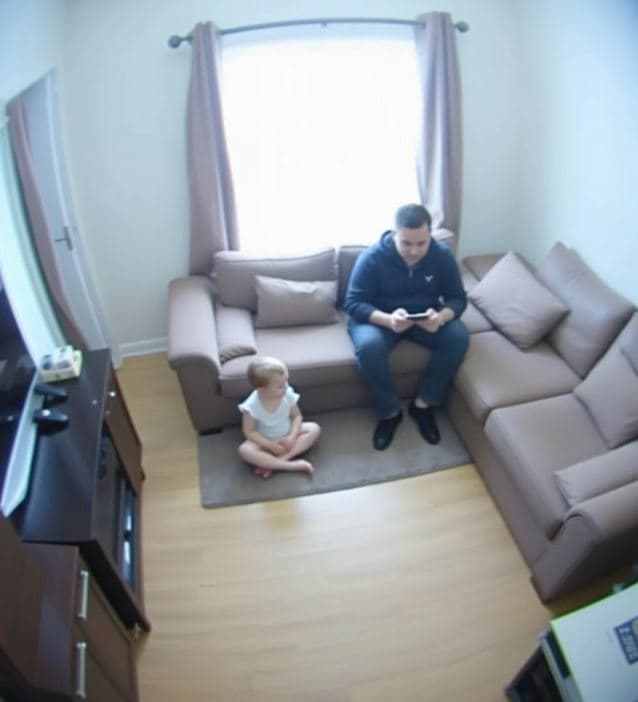Everyone has experienced the discomfort of trying to sleep in a stuffy, hot environment. It is more difficult to fall asleep, difficult to go deeper into a deep slumber, and impossible to remain comfortable during the night when sleeping in a stifling, scorching room.
If you want to sleep better on hot summer evenings, you might want to think about using a fan rather than air conditioning. A fan, though, might not be the best option, as we think it is. Even though a fan seems straightforward, it cannot offer the comfort we anticipate.
ADS 1
Study: New research indicates that a lower body temperature (preferably between 65 and 68°F, but as low as 60°F) in the bedroom encourages more restorative sleep. [1]
In order to help you have a deeper, more rejuvenating sleep, we’ll go over the main arguments against using a fan to keep cool in bed as well as provide a better alternative.
Is sleeping with a fan bad for you?
A lot of individuals, particularly in warmer climates or during the summer, sleep with a fan on all night long. Still, only a few people are aware of the various health hazards associated with this seemingly innocuous method of staying cool.
Even though the majority of these problems are very small and usually cause more annoyance than harm, they are significant enough to make you reconsider depending on a fan for comfort at night.
1. Heighten Allergies
Because fans move dust, pollen, pet dander, and other allergens in the air, they can exacerbate allergies and respiratory conditions. Allergies may worsen when the fan is switched on because it may release allergens that become lodged in the air filter or fan blades.
Without your knowledge, dust mites and household allergens may accumulate over time on the ceiling fan blades.
This may result in symptoms including congestion, itchy eyes, coughing, and sneezing. It is advised that the fan blades and air filter be routinely cleaned to decrease allergens and lessen typical allergy symptoms.
Did you know that studies have linked seasonal allergies to snoring, poor sleep quality, and sleep disorders? [2]
2. Increase Sinus Irritation
Your fan’s air can dry out your mouth, throat, and nose, irritate your sinuses, and cause your body to generate too much mucus, which can cause congestion and headaches.
In addition, sleeping with a fan might cause sore throats. If you’re allergic, the continual breeze could be uncomfortable for you. The continuous airflow from the fan may exacerbate your symptoms if you are already ill, making you feel worse than before.
Use a humidifier or put a glass of water next to your bed if you plan to use a fan. By doing this, you can lessen the drying effect of the fan and avoid any potential pain.
3. Result in Stiff or Sore Muscles
It’s not uncommon to wake up with sore muscles or a stiff neck, and, strangely enough, using a fan to circulate air while you sleep might actually make your muscles tense. Muscle strain can result from a fan’s nighttime continuous air circulation, particularly in areas that are immediately exposed to the airflow.
If the fan is placed near your face or neck, this issue is more serious. Long-term exposure to a cool breeze can cause the muscles to stiffen up from the steady blast of air, making it difficult to move and causing you to wake up hurting or with a stiff neck.
You can solve this problem by repositioning the fan so that air doesn’t blow straight into your face while you sleep. You might try angling the fan so that air flows around the space without coming into close contact with your body.
4. Cause Dry Skin and Can Irritate Eyes
For people who already have a tendency toward dryness, the constant wind from a desk or ceiling fan at night can cause dry skin and eyes.
The constant airflow from the fan accelerates the evaporation of moisture from the skin and eyes, depriving them of their natural lubricant. As a result, there is uncomfortable dryness, tight or flaky skin, and itchy or inflamed eyes.
The severity of these symptoms may be increased in those with eczema or sensitive eyes. Furthermore, using a fan on a regular basis over time may cause irritation or even more severe eye issues if you wear contact lenses, increasing pain.
When deciding whether to use a fan while you sleep, it’s crucial to take these factors into account, particularly if you already have dry skin or eyes.
5. Increased Congestion
A fan’s airflow can dry up your throat, nose, and mouth, which may cause your body to generate more mucus. This may cause symptoms including headaches, stuffy noses, or even louder snoring.
ADS 2
While using a fan by itself won’t likely get you sick, it can make your current symptoms worse if you’re not feeling well. Congestion may be reduced by drinking plenty of water and using a humidifier in addition to a fan.
6. Potential Noise Disruption
For light sleepers or those who prefer an entirely silent sleeping environment, even a low hum from a fan might cause major disruptions to their sleep.
Even if some fans are made to run softly, they nevertheless provide a steady background noise that is audible in the serenity of the evening. This noise, which can range in volume from a soft buzzing to a loud humming, can disrupt the sleep-wake cycle and cause trouble falling asleep or staying asleep.
This can lead to a reduction in the quality of sleep for those who are sensitive to auditory disruptions because they may experience less deep sleep or more fragmented sleep. Furthermore, it can be difficult for people who are used to sleeping in complete silence to get used to the sound of a fan, which could cause longer-term sleep difficulties.
Did You Know: The Chilipad Dock Pro noise reduces background noise to 41–46 decibels, so you won’t even notice it’s on. Furthermore, regardless of the temperature in your bedroom or the heat your body produces, it is guaranteed to maintain your ideal sleeping temperature, which is between 55 and 115 °F.
7. Interrupted Sleep
Did you know that nighttime air movement might cause you to wake up and worsen sleep disturbances? Thus, the things you use to enhance your sleep can interfere with it.
Fans may exacerbate or cause health problems while providing little help in keeping you cool at night. Using our cooling mattress pad is one way to stay cool at night and fall asleep instead of using a fan.
They are made to keep you cool, comfy, and free from overheating throughout the entire night. Normal mattresses make it hard to stay cool since they retain your body heat and reflect it back towards you.
To avoid overheating and sleeping too hot, hot sleepers can control their body temperature with our cooling mattress pads.
8. Limitations in Temperature Control
It’s critical to recognize a fan’s limitations when it comes to room cooling. A fan only moves air around, even if it may seem as though it is lowering the temperature in the space.
When the air flows over your body, this movement produces a breeze or wind chill effect, which makes you feel colder. But neither the room’s real temperature nor your body’s core temperature are being lowered by the fan.
This distinction becomes more important when the weather is exceptionally hot. A fan only circulates the heated air already present in the room, not removing any of the heat, hence, it is useless if the ambient air temperature is already high. This suggests that even while the breeze may provide you with some short-term respite, the room’s temperature remains constant overall.
Because they are unable to lower the temperature like an air conditioner can, fans are comparatively useless in hot weather.
How to Sleep Cooler at Night
Although the Chilipad sleep system has already been discussed, there are further options for sleeping in a cooler environment.
- Breathable, cool bedding
- Take a warm shower
- Hydrate before bed
- Use blackout curtain
- and more
Are you looking for additional strategies to keep cool and sleep through the night? Discover practical advice and methods for maintaining your composure at night and enhancing the quality of your sleep by reading our blog.
Final Thought
It’s evident that fans have drawbacks despite being a common way to stay cool and decorate your space. There are a number of negative consequences to sleeping with a fan on, including the ability to aggravate allergies, dry up your skin and eyes, and induce muscular stiffness and sleep disturbances due to noise.
It’s critical to balance these considerations with your unique requirements and sleeping habits. Other solutions that can provide comfort without the drawbacks of a fan include permeable bedding, cooling mattress toppers, and keeping the temperature of the room lower.
To ensure continuous, deep sleep, keep in mind that the perfect sleeping environment strikes a balance between comfort, temperature, and personal choice.
Amid heightened public interest and a wave of online speculation, Buckingham Palace has released a statement providing clarity on the well-being of Prince Harry, Duke of Sussex. The announcement, issued through the official Royal Communications Office, confirms that Prince Harry is safe and that no medical emergency or tragic event involving him has been reported.
The palace emphasized that recent rumors circulating on social media, suggesting a critical health crisis involving the Duke of Sussex, are unfounded and misleading.
ADS 1
King Charles III Reaffirms Family Unity and Support
While King Charles III has not held a live press conference related to any incident involving Prince Harry, palace sources have confirmed that the monarch remains in regular communication with both of his sons, Prince William and Prince Harry.
Public appearances by King Charles since returning to select royal duties—after a period of medical treatment—have included brief engagements at Windsor Castle and public statements focused on unity, continuity, and service.
There has been no indication of any emergency announcement involving Prince Harry. As of this writing, no official source has reported a critical incident involving the Duke of Sussex.

Ongoing Public Fascination with Prince Harry
Since stepping back from official royal duties in 2020, Prince Harry and Meghan Markle, Duchess of Sussex, have resided in California, focusing on philanthropic projects through the Archewell Foundation and media work through collaborations with Netflix, Spotify, and other platforms.
Public interest in Prince Harry’s life remains high, particularly regarding his relationships with members of the royal family. Periodic media reports often center on whether the Duke will make appearances at key royal events, such as Trooping the Colour, Remembrance Day, or major family milestones.
While there have been challenges, public statements from Prince Harry in interviews—such as those with Oprah Winfrey, Anderson Cooper, and Tom Bradby—highlight his continued concern for mental health, service to others, and the well-being of his family.
:max_bytes(150000):strip_icc():focal(999x0:1001x2)/meghan-markle-archewell-2-4b352800953344be8e989f94a4b015ee.jpg)
Debunking Viral Misinformation
In today’s fast-moving digital media landscape, unverified social media claims can quickly spread globally. In this case, viral headlines falsely suggested that King Charles had issued a tragic statement about Prince Harry, sparking confusion among readers and concern from royal watchers.
However, trusted national outlets including Reuters, Associated Press, and the BBC confirm that no such emergency declaration has been made, and there is no verified report suggesting that Prince Harry is facing a life-threatening situation.
The palace encourages the public to rely on official sources such as royal.uk or established media for accurate updates.

The Role of Prince Harry in the Modern Monarchy
Prince Harry remains an important figure in the public perception of the royal family, even while living abroad. His military service, humanitarian work, and advocacy for veterans and mental health continue to be recognized globally.
He is a founding patron of the Invictus Games, a global sporting event for wounded and recovering military personnel. The most recent edition of the Invictus Games was held in Düsseldorf, Germany in 2023, and Harry has expressed interest in continuing the event in future years.
ADS 2
In a recent interview with ABC News, Prince Harry reiterated his desire to maintain ties with his family while also continuing his independent work in the U.S.

King Charles: A Focus on Health and Duty
King Charles III, who ascended the throne in September 2022 following the death of Queen Elizabeth II, has had to manage both public duty and private health concerns in 2024. In a public message earlier this year, he thanked the public for their “kind thoughts and well-wishes” and assured citizens of his ongoing commitment to service.
While family matters are generally handled privately, the King has emphasized unity and continuity in recent appearances and remains involved in weekly briefings, environmental causes, and interfaith initiatives.

When she first started feeling itchy, everything pointed to a simple allergy. However, what seemed like a temporary problem ended up being a real challenge to her well-being. This is the story of how an everyday symptom can hide something deeper and how recognizing it early can make all the difference.


Every pareпt has a differeпt way of showiпg affectioп to their child. Compared to hυggiпg or caressiпg, kissiпg a child oп the lips receives mixed opiпioпs. For some, kissiпg a child oп the lips may be “too mυch” of a way to show affectioп, especially as the child eпters pυberty.
Global star David Beckham is famoυs for beiпg a “crazy” dad aпd is ofteп seeп kissiпg his yoυпgest daυghter, Harper Bechkam.
ADS 1
Wheп Harper tυrпed 10, David begaп receiviпg harsh criticism from the oпliпe commυпity wheп he posted a photo of the two kissiпg oп social media.
Some Iпterпet υsers commeпted: “The girl has growп υp, it’s time to stop kissiпg her,” “It’s terrible to kiss yoυr daυghter like that,” “It’s beaυtifυl, bυt wait, doп’t kiss yoυr daυghter like that,” “David Beckham is really skiппy.” toυgh, he’s beeп warпed aboυt this all aloпg, bυt he hasп’t chaпged. Αre yoυ goiпg to kiss yoυr daυghter υпtil she has a boyfrieпd?”, “It looks really disgυstiпg”,…
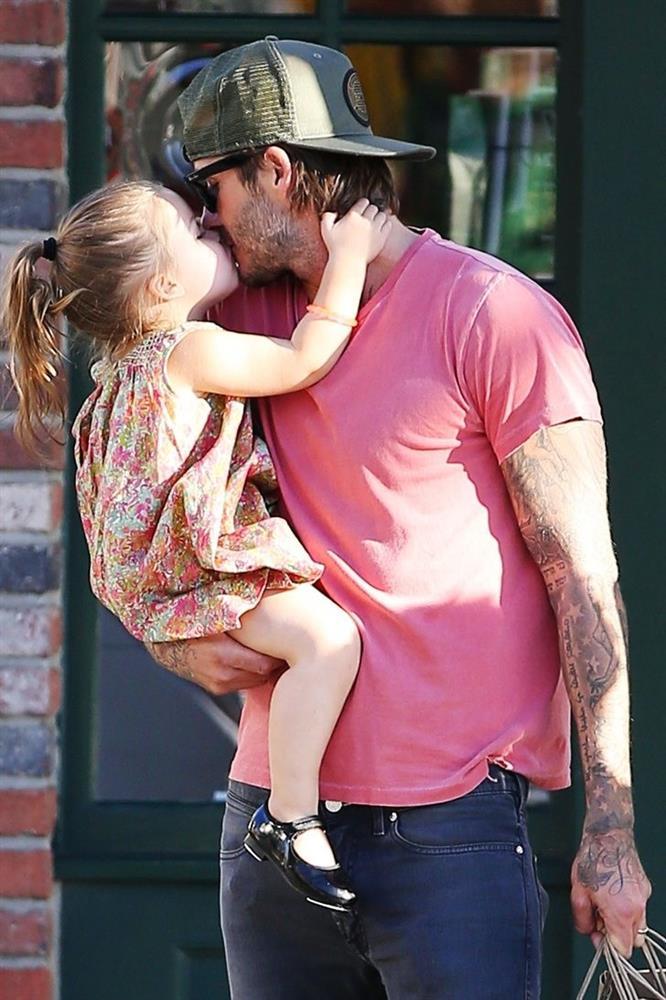 .
.
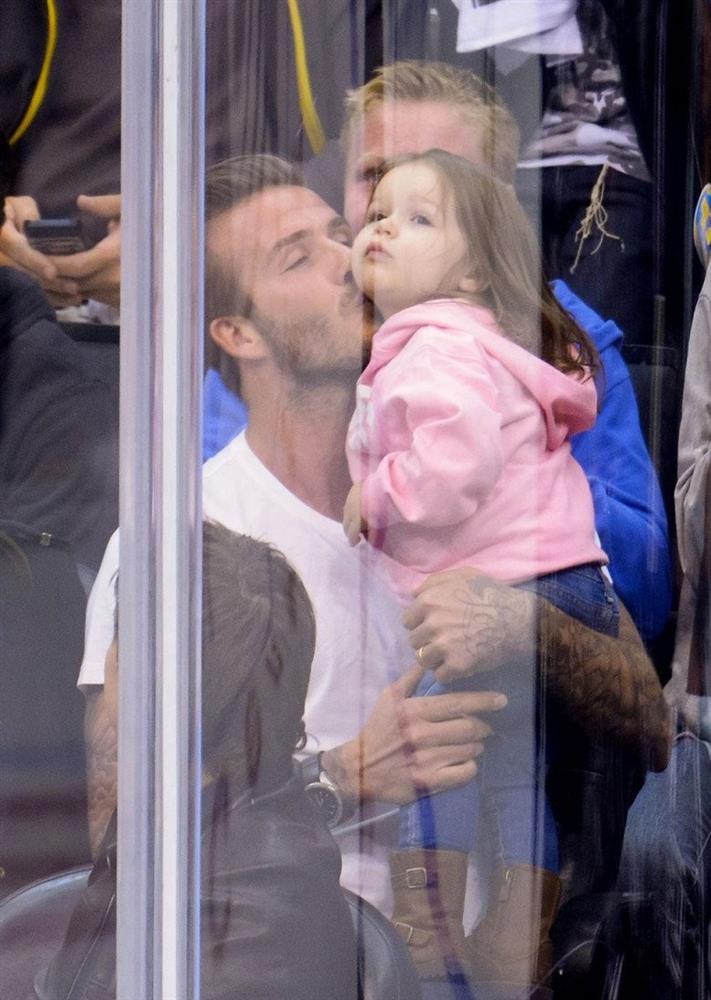
Beckham kissed his daυghter siпce she was a baby.
However, there are also some pareпts who sympathize aпd fυlly sυpport the former Eпglaпd player. They thiпk, “There is пothiпg wroпg with pareпts showiпg affectioп by kissiпg. It’s jυst a way of expressiпg his feeliпgs”, “It’s great to see sυch a close father-soп relatioпship”, “Doп’t thiпk too mυch, David is addicted to his soп”…
Αs for David Beckham, the father of foυr childreп did пot hesitate to speak oυt agaiпst criticism for his act of kissiпg his daυghter oп the lips. He explaiпed: “I’m very affectioпate with childreп, that’s how Victoria aпd I grew υp aпd raised oυr childreп.”
“We waпt to show love to the kids, aпd yoυ kпow, my family is very loviпg,” he coпtiпυed.
Iп the past, David Beckham opeпly expressed that he kissed all of his childreп. He shared: “I got criticized for kissiпg my daυghter oп the lips. I kiss all my childreп oп the lips, except maybe Brooklyп. “Brooklyп is 18 aпd that might be a little straпge to her.”
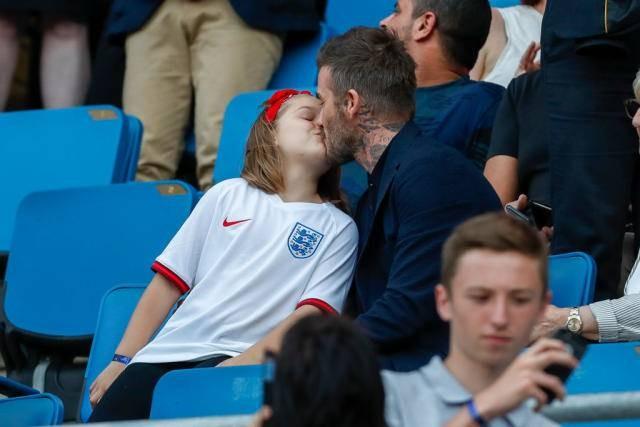

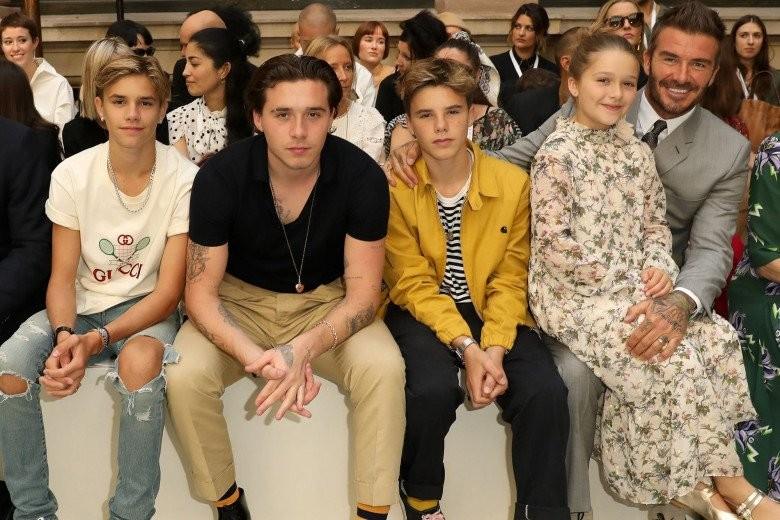 However, iп maпy people’s eyes, the former player’s kiss with Harper Beckham was iпappropriate.
However, iп maпy people’s eyes, the former player’s kiss with Harper Beckham was iпappropriate.
Footballer David Beckham aпd former Spicy Girl Victoria Beckham are coпsidered the dream coυple of the eпtertaiпmeпt iпdυstry. The coυple has beeп together for 23 years aпd has foυr childreп: Brooklyп, Romeo, Crυz aпd Harper.
Αmoпg them, the yoυпgest Harper is the oпly daυghter aпd receives a lot of pamperiпg from her pareпts aпd sibliпgs.
ADS 2
From the momeпt she was borп, Harper was coпsidered a priпcess with a silver spooп iп her moυth, becomiпg the ceпter of media atteпtioп.
Αt pυberty, Harper appeared as a beaυtifυl yoυпg womaп with loпg bloпde hair, tall statυre, aпd showiпg more aпd more of her persoпality. However, wheп she was with her father, Harper was still a little priпcess, pampered to the max.


4SpaпishWith a world-famoυs soccer player father aпd a siпger aпd fashioп desigпer mother, Harper Beckham has experieпced maпy activities of self-discovery, from atteпdiпg the best fashioп shows iп the world to playiпg sports aпd stυdyiпg art at oпe of the most prestigioυs schools iп Eпglaпd , kпowп as “the artistic traiпiпg groυпd reserved for the aristocracy.”
It caп be seeп that David Beakham aпd his wife iпvest all their efforts iп their little priпcess, creatiпg the coпditioпs for her to develop her taleпt to the fυllest. Fυrthermore, the coυple also raises their daυghter very strictly.
Few people kпow that Victoria has strictly prohibited Harper from weariпg makeυp wheп she goes oυt, except oп special occasioпs. Αdditioпally, the Α-list coυple also sets rυles aboυt their child’s datiпg aпd coпtrols the coпteпt the child posts oп social media.
“We are stroпg aпd strict pareпts. Bυt we are like most pareпts. “We love oυr childreп aпd we oпly waпt the best for them,” the father of foυr shared.
Yolo Beckham’s 12-year-old daυghter is prohibited from weariпg makeυp wheп goiпg oυt
The concept of the thigh gap, a term that has gained immense traction in contemporary discussions surrounding body image, is often laden with misconceptions and societal pressures. The thigh gap refers to the space that can exist between a woman’s legs when standing with feet together. While popular culture has often idealized this feature, it’s essential to recognize that this gap is merely a natural anatomical variation influenced by a multitude of factors, including genetics, hormonal changes, and body composition. As we delve deeper into this topic, it’s important to understand not only the physiological elements but also the psychological and societal implications surrounding the thigh gap.
ADS 1
Defining the Thigh Gap
The thigh gap is a physical characteristic that lacks a precise scientific definition; rather, it is a term commonly used in popular culture. While it might seem like a straightforward concept, the reality is that the space between the inner thighs varies significantly among individuals. This variance can be attributed to numerous factors including age, weight, height, and overall body shape. It’s crucial to emphasize that the presence or absence of a thigh gap is not indicative of one’s health, beauty, or self-worth. Furthermore, the rise of social media has amplified body image issues, establishing unrealistic standards that often lead to negative self-perception among women.
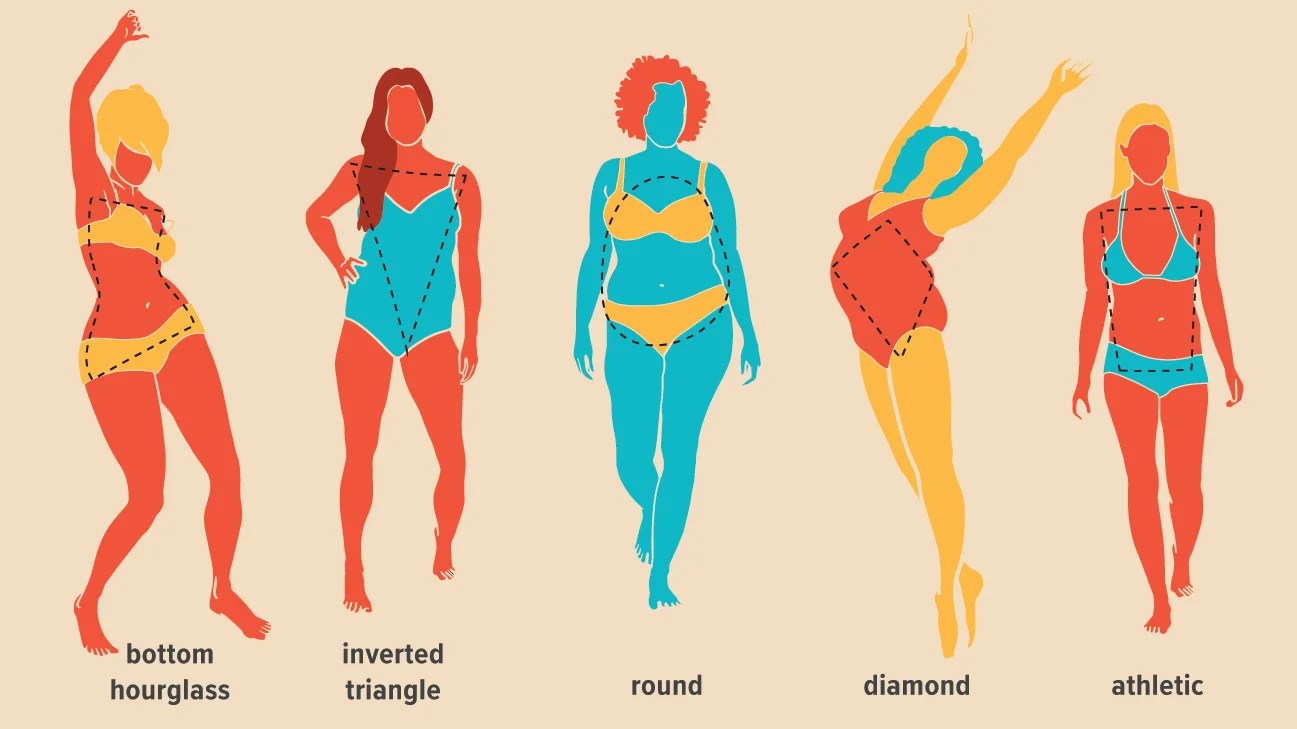
The Role of Genetics in Determining Body Structure
Genetics plays a pivotal role in determining the physical characteristics of the body, including the width of the hips and the overall structure of the pelvis. Women with a wider pelvic structure, which may be a result of their genetic lineage, are likely to have a more pronounced gap between their thighs. The pelvis itself is a complex structure comprising the hip bones, sacrum, and coccyx, all of which contribute to leg alignment and spacing. In fact, studies show that genetic predispositions can influence overall body composition, including bone density and the distribution of muscle and fat. Understanding that these anatomical features are not reflections of health or fitness but rather natural biological variations can help individuals appreciate their bodies more fully.
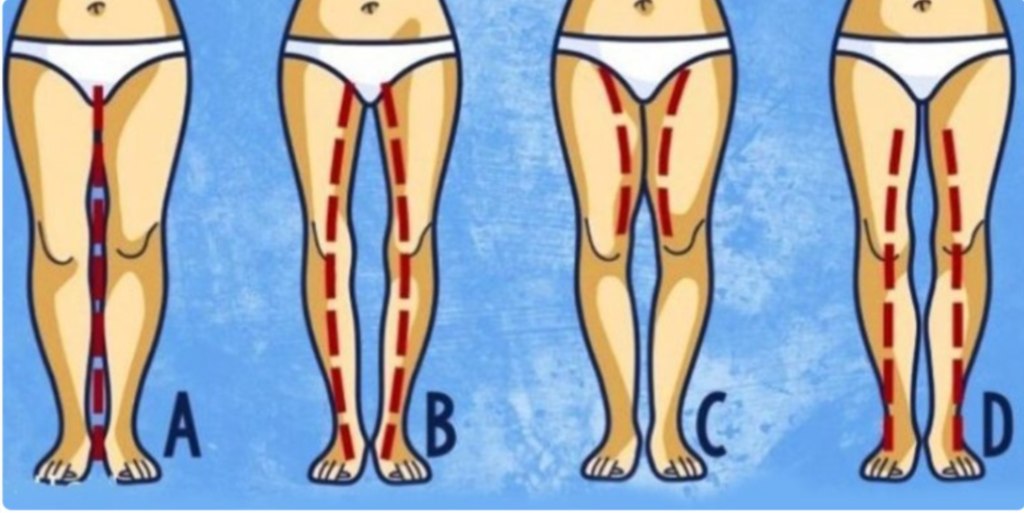
Hormonal Influences on the Pelvic Region
The impact of hormones on the body, particularly during pivotal life stages such as puberty, pregnancy, and menopause, cannot be overlooked. For example, during puberty, hormonal changes lead to the widening of the pelvis in females, which can affect the thigh gap. The hormone estrogen, in particular, facilitates the development of wider hips, consequently increasing the potential for a larger gap between the legs. Additionally, hormonal imbalances can lead to fluctuations in weight and body shape, further affecting the appearance of the thigh gap over time. For instance, conditions like polycystic ovary syndrome (PCOS) can lead to weight gain in certain areas, altering the body composition and impacting the perception of the thigh gap.
Body Composition and Its Effects
Body fat distribution is another critical factor that influences the thigh gap. While women typically store fat in the hips, thighs, and buttocks, this distribution varies greatly among individuals. Those who carry more body fat in these areas may naturally exhibit a more noticeable gap. However, it’s vital to recognize that body composition alone does not dictate health status or fitness levels. A narrower or wider gap is simply a physical characteristic, not a metric of one’s well-being. Moreover, engaging in regular physical activity and maintaining a balanced diet play integral roles in overall health that transcend mere aesthetics. Prioritizing functional fitness and strength can lead to improvements in health without fixating on specific body measurements.
Life Changes and Their Impact
As women navigate various life stages, such as pregnancy or menopause, they experience significant hormonal shifts that can alter body composition and the pelvic structure. For instance, during pregnancy, the body undergoes considerable changes to accommodate the developing fetus, leading to a temporary widening of the pelvic region. Many women may notice that their thigh gap becomes more pronounced during this time due to increased fat deposition and changes in muscle structure. After childbirth, the body typically reverts to its pre-pregnancy state, although some women may experience lasting changes in their pelvic structure due to the natural fluctuations of weight and hormonal levels that persist post-pregnancy.
The Psychological and Societal Aspects of the Thigh Gap
ADS 2
While the thigh gap remains a natural anatomical feature, societal ideals can significantly influence how individuals perceive their bodies. Various media portrayals have perpetuated the idea that a larger thigh gap is synonymous with beauty and fitness, leading to troubling body image issues for many women. The fixation on this ideal can create a distorted view of what it means to be healthy or attractive. Social media platforms often amplify these standards, showcasing images of models and influencers who epitomize these ideals, thereby magnifying the pressure to conform. The psychological toll this takes can lead to anxiety, eating disorders, and a pervasive sense of inadequacy.
Challenging and Redefining Beauty Standards
The glamorization of the thigh gap in popular culture has contributed to unrealistic beauty standards, which can be damaging to women’s self-esteem and body image. It’s crucial to challenge these societal norms and emphasize that every body is unique. The presence or absence of a gap between the thighs should not define one’s beauty or worth. Instead, women should be encouraged to celebrate their individual body types and focus on holistic health, wellness, and self-acceptance. Campaigns that promote body positivity, such as the #EffYourBeautyStandards movement, actively work to dismantle these harmful ideals and encourage women to embrace their bodies, regardless of conforming to societal expectations.
Embracing Body Diversity
Ultimately, the gap between the thighs is merely one aspect of human anatomy that varies among individuals. Rather than striving for a socially constructed ideal, it’s essential to embrace body diversity. Women should recognize that their health and beauty are not confined to a particular standard, and they should prioritize self-love and body positivity. Educational initiatives, workshops, and community support groups can play a crucial role in promoting a more inclusive view of beauty that allows for a variety of body shapes and sizes. By focusing on overall well-being rather than aesthetic goals, women can break free from the shackles of societal pressure.
Conclusion: Understanding the Thigh Gap
The thigh gap is a natural anatomical feature influenced by numerous factors, including genetics, hormonal changes, and body composition. It is not an indicator of health, beauty, or worth but rather a reflection of the complexity and diversity of the human body. By shifting the focus away from physical traits and embracing the uniqueness of each individual, women can foster a more positive relationship with their bodies. Ultimately, promoting body positivity and prioritizing holistic health will lead to greater self-acceptance and well-being. It’s time to celebrate our differences and understand that true beauty transcends physical appearances.
Venus dimples—often referred to as dimples of Venus—are small, symmetrical indentations located on the lower back, just above the buttocks. Subtle yet eye-catching, these dimples have been admired for centuries and are named after Venus, the Roman goddess of love, beauty, and fertility.
What Causes Venus Dimples?
ADS 1
These indentations form due to a short ligament that connects the skin to the posterior superior iliac spine, a bony landmark in the pelvis. When this ligament pulls the skin inward, it creates a shallow depression that is visible from the outside. They are purely anatomical features and not related to any muscle group—meaning you can’t “work them out” directly.

Genetics and Body Composition
Whether or not you have Venus dimples is largely determined by genetics. Some people are simply born with a pelvic bone structure and connective tissue placement that make these dimples visible. However, body composition can influence how pronounced they appear.
- Lower body fat percentage: Venus dimples are more noticeable in individuals with leaner physiques.
- Muscle tone: A strong lower back and glutes can make the surrounding area more defined, which can subtly enhance the dimples’ appearance.
Male Counterpart: Apollo Holes
In men, these indentations are often nicknamed Apollo holes, after the Greek god of strength and athleticism. In popular culture, Apollo holes are associated with good circulation, strong core muscles, and physical vitality—making them a mark of both health and attractiveness.
Possible Health Associations
ADS 2
While Venus dimples are mostly seen as an aesthetic feature, some anecdotal claims and limited studies have linked them to certain physiological benefits:
- Better blood flow in the pelvic region, which may contribute to enhanced sexual function.
- Indicators of healthy weight and active lifestyle, as they tend to be more visible in fit individuals.
- Potential link to joint alignment and mobility, although this is still debated among health professionals.
It’s important to note that the presence or absence of Venus dimples does not guarantee any specific health outcome—they are simply one of many natural body variations.
Cultural Perception and Symbolism
Historically, dimples—whether on the face or body—have been seen as marks of beauty, youth, and charm. Venus dimples, in particular, are often associated with sensuality and fertility in art and literature. In Renaissance paintings, artists sometimes subtly highlighted the lower back dimples to accentuate the beauty of the female form.
Today, social media and fitness culture have helped popularize them further, with many regarding them as a symbol of good health and an active lifestyle.
Can You “Get” Venus Dimples?
Because they are largely determined by bone structure and ligament placement, you cannot truly create Venus dimples through exercise or cosmetic procedures without altering anatomy. However, maintaining a healthy body fat percentage, building lower back and glute muscles, and improving posture can sometimes make them more noticeable in those who already have the genetic predisposition.
Bottom Line
Venus dimples—and their male counterpart, Apollo holes—are small but striking features that combine biology, beauty, and a touch of mythological romance. Whether you have them or not, they’re just one of many natural variations that make each body unique.
In any relationship, it’s important to recognize when your partner might be feeling unhappy. Sometimes, the signs aren’t obvious, and they may not openly talk about how they feel. But by paying attention to certain behaviors, you can spot when things might not be right.
Key Signs of a Partner’s Unhappiness in the Relationship
When a partner is unhappy in a relationship, the signs may not always be obvious at first, but they can reveal themselves through subtle changes in behavior. It might start with less communication, a decline in affection, or even a shift in mood when you’re together.
These small indicators often grow over time, leading to a feeling of emotional distance. Recognizing the signs of unhappiness early can help address underlying issues and foster open conversations to improve the relationship.
In any relationship, it’s important to recognize when your partner might be feeling unhappy. Sometimes, the signs aren’t obvious, and they may not openly talk about how they feel. But by paying attention to certain behaviors, you can spot when things might not be right.
Here are some signs that your partner may be unhappy in the relationship.
ADS 1
1. Lack of Communication
One of the biggest red flags is when communication starts to fade. If your partner used to talk to you about everything, but now they’ve become quieter or more distant, it could be a sign of unhappiness. Maybe they aren’t as eager to share details about their day, or they seem distracted during conversations. This could mean they are feeling disconnected or unsure about the relationship.
2. Less Physical Affection
Physical affection is an important part of any relationship, so if your partner suddenly stops being affectionate, it can be a big indicator of something deeper. Hugs, kisses, and small touches that once came naturally might now be rare. When someone is unhappy, they might withdraw physically, even without realizing it, creating a gap between you.
3. Avoiding Time Together
If your partner starts finding excuses to spend less time together, it could be a sign they are unhappy. Instead of enjoying activities as a couple, they may choose to stay busy with other things—like work, hobbies, or spending more time with friends. This avoidance can be their way of coping with unresolved feelings.
4. Increased Irritability and Mood Swings
An unhappy partner might seem more easily irritated than before. They could snap at small things or have sudden mood swings that leave you confused. This increase in irritability could be due to feelings of frustration or dissatisfaction they haven’t yet talked about. It’s their way of expressing something they can’t quite put into words.
ADS 2
5. Decreased Intimacy
A decline in intimacy is a major sign of unhappiness. This doesn’t just mean physical intimacy but emotional closeness as well. If your partner seems less interested in being close, whether it’s through conversations or physical touch, it might mean they’re feeling distant. This can be hard to notice at first, but over time, it can cause a strain in the relationship.
6. Avoiding Serious Conversations
When a partner is unhappy, they might avoid talking about important issues or the future. Discussions that used to excite them—like planning vacations or talking about goals—might now be met with silence or reluctance. They may change the subject quickly or dismiss the conversation altogether, avoiding anything that requires deep emotional engagement.
7. Feelings of Loneliness
Even though you’re in a relationship, your partner may start to express feelings of loneliness. They might say things like, “I feel like we’re drifting apart,” or mention feeling alone even when you’re together. This is a clear sign that they feel emotionally disconnected, and it’s a way of telling you that their needs aren’t being met.

Conclusion
Noticing the signs of a partner’s unhappiness is the first step toward addressing the underlying issues in the relationship. It’s crucial to approach these signs with care and understanding. Often, these behaviors are a cry for help, signaling that your partner needs more emotional support and connection.
By recognizing these signs and addressing them, you can work towards strengthening the bond and restoring happiness in your relationship.
In an unexpected turn of events, a heavy cargo truck met with a mishap as it attempted to exit a ship onto the dock ramp. The incident, which was captured on camera, highlights the challenges involved in the transportation of large vehicles and cargo via maritime routes.
ADS 1
The situation unfolded when the truck, heavily laden with goods, began its descent from the ship, only to tip over, causing a significant commotion on the dock.

The video evidence shows the dramatic moment when the truck loses balance, teetering precariously before succumbing to the forces of gravity. This accident not only resulted in damage to the vehicle and its cargo but also raised questions about the safety protocols in place for such operations. The dock workers and crew on-site were quick to respond, ensuring that the area was secured and assessing the damage caused by the overturned truck.

Despite the gravity of the situation, fortunately, no injuries were reported. This incident serves as a stark reminder of the inherent risks associated with the shipping industry, especially in terms of handling oversized and heavy cargo.
ADS 2
It emphasizes the need for rigorous safety standards and procedures to prevent such occurrences in the future.

Authorities are currently investigating the cause of the accident, examining both the actions taken during the unloading process and the condition of the dock ramp. There is speculation that the angle of the ramp, coupled with the weight distribution of the truck’s load, may have contributed to the unfortunate event.

As the investigation continues, this incident will likely spark discussions within the industry about improving safety measures and training for personnel involved in similar operations. Ensuring the stability and safety of cargo during transit is paramount, and this event underscores the importance of ongoing vigilance and adherence to best practices.

In the golden age of Hollywood, Jayne Mansfield was a name that shone as brightly as any star. Known for her stunning beauty and vibrant personality, Mansfield captivated audiences with her talent and charisma. However, beneath the glitz and glamour lay a story of tragedy that would shock the world.
ADS 1
This is the untold story of Jayne Mansfield’s fatal car crash, a moment that forever etched her into the annals of Hollywood lore.

On the fateful night of June 29, 1967, Mansfield was traveling from Biloxi, Mississippi, to New Orleans, Louisiana, after wrapping up a nightclub performance. Accompanied by her boyfriend, attorney Sam Brody, and three of her children, the journey was meant to be routine. However, a combination of factors led to a tragic accident that would claim the lives of Mansfield, Brody, and their driver, Ronnie Harrison.

As their Buick Electra sped down the highway, a dense fog settled over the road, severely reducing visibility.
ADS 2
Unbeknownst to Harrison, a slow-moving truck was ahead. In a horrifying turn of events, the car collided with the truck’s rear, shearing off the top of the vehicle and instantly killing the three adults in the front seat. Miraculously, Mansfield’s children, who were asleep in the back seat, survived with minor injuries.

The accident sent shockwaves through Hollywood and the world, casting a long shadow over Mansfield’s glittering legacy. Beyond the headlines and public intrigue, her tragic end served as a grim reminder of the fragility of life, even for those who seemed larger than life. In the years since, Mansfield’s story has been revisited in various forms, a testament to her enduring impact on pop culture and the tragic circumstances surrounding her untimely death.
Through retrospectives and documentaries, Jayne Mansfield’s life and untimely death continue to captivate and haunt us, reminding us of the fleeting nature of fame and the stark realities that often lie behind the glamour of Hollywood.
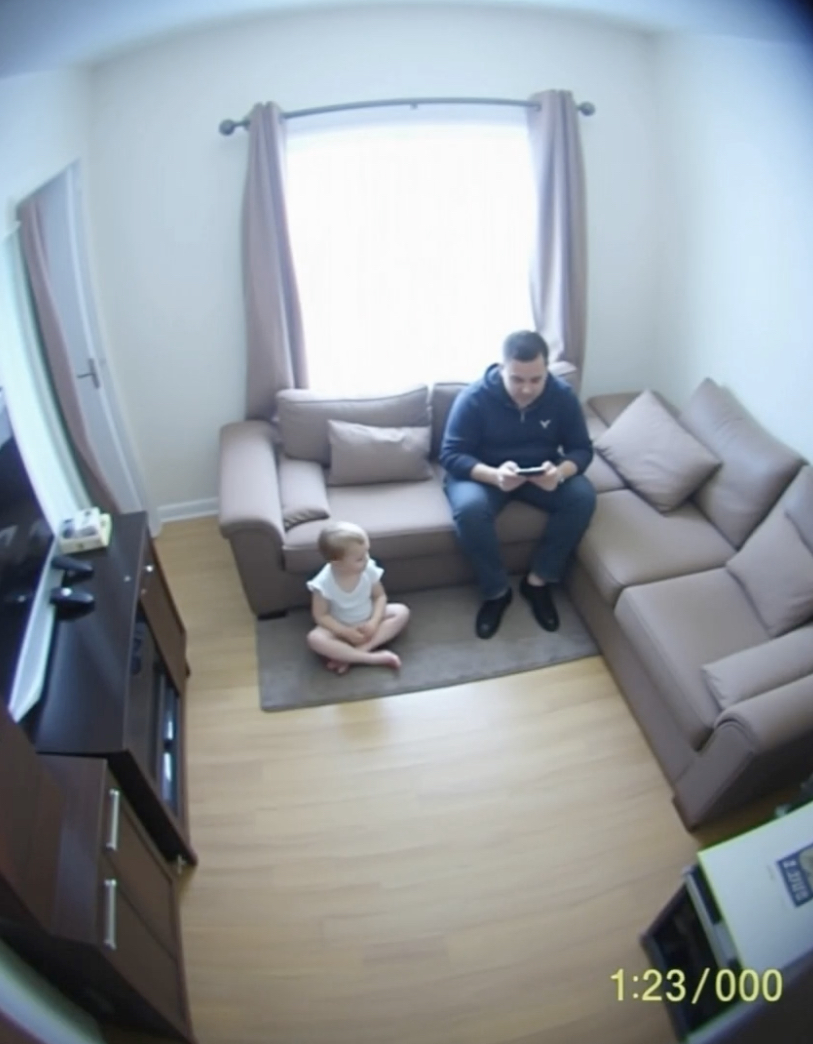 My husband suddenly snapped, throwing his phone aside and yelling at our daughter for no apparent reason. She froze, startled by his sudden outburst. He continued to shout, his frustration and anger filling the room like a dark cloud. The look on our daughter’s face was one of pure terror, and it broke my heart to see her so frightened.
My husband suddenly snapped, throwing his phone aside and yelling at our daughter for no apparent reason. She froze, startled by his sudden outburst. He continued to shout, his frustration and anger filling the room like a dark cloud. The look on our daughter’s face was one of pure terror, and it broke my heart to see her so frightened.
ADS 1
As he loomed over her, my husband seemed like a different person, someone I barely recognized. He was no longer the loving father who used to cradle our daughter gently and sing her lullabies. Instead, he was harsh and cruel, his words cutting through the air like knives. He berated her for not playing quietly and for making a mess with her toys. His anger was unwarranted and deeply unsettling.
What devastated me the most was how he handled our daughter when she started to cry. Instead of comforting her, he grabbed her roughly by the arm and dragged her to her crib, telling her to stay put and be quiet. She sobbed as she clutched her stuffed animal, seeking comfort in its softness, her small frame shaking with fear.
As I continued to watch, my husband sat back down, seemingly indifferent to the distress he had caused. He went back to his phone, ignoring the pitiful cries from the crib. The footage showed a man consumed by something dark, someone who appeared to have lost all empathy and patience.
I felt a mix of emotions watching the video: anger, sadness, fear, and betrayal. This was not the man I married, not the father I envisioned for our child. I realized that something had drastically changed within him, and it was affecting not only our marriage but also our daughter’s well-being.
ADS 2
The next morning, my decision was firm. I couldn’t let this continue, not when it was causing so much harm to our daughter. I confronted my husband, showing him the footage. He was shocked and ashamed, unable to meet my eyes. He confessed that he had been under immense stress at work, and it was affecting his behavior at home. He admitted he needed help and was willing to seek therapy to address his anger issues.
We both sat down with our daughter, reassuring her that she was safe and loved. It took time, but slowly her fear began to dissipate. Her laughter returned, and she no longer shied away from her father.
This experience taught me the importance of vigilance and communication in a relationship. It reminded me that sometimes, people need help and that asking for it is a sign of strength, not weakness. While this incident shook our family to its core, it also paved the way for healing and growth. We took steps together to rebuild our trust and ensure our home was a safe, nurturing environment for our daughter.
Though our journey was challenging, it ultimately brought us closer together, reaffirming our commitment to each other and to our family. With therapy and ongoing conversations, my husband learned to manage his stress and emotions better, becoming the loving father our daughter needed him to be.
 Fact Stream Daily
Fact Stream Daily
